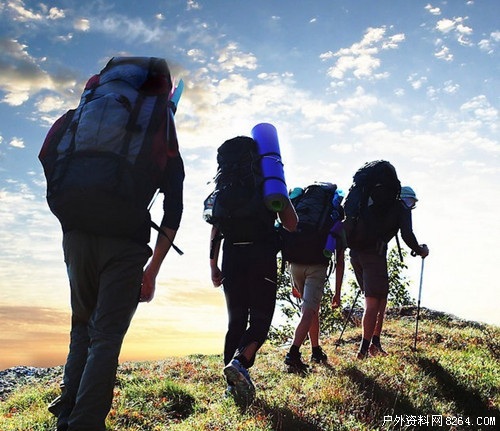Outdoor Trekking: Xiao Bian Weapons Let ALICE Land in the Mountains

Stable center of gravity
The hiking and hiking steps in the mountains must be performed in a different step than the smooth asphalt pavement in the city. Usually, walking on the asphalt is the natural horizontal swinging motion. However, the ups and downs of the mountain road are uneven, sometimes there are even rolling stones, it is not easy to go. When hiking and trekking, the most important thing is "walking posture" and "steps." The first description is walking posture. The head, waist, and feet are held on the same line of gravity, and this line is often taken as the axis of the body to move.
Method: Raise one foot knee and balance with the other foot. Do not apply force to your shoulders. When your walking heart shifts from your hind foot to your fore foot, move your head and waist center of gravity forward. Do not move your forefoot knees. Prominently, step forward again and create a center of gravity. In this way, the method in which the head, waist, and foot's center of gravity continue to move alternately is the correct walking posture. The center of the hill moved forward, and the downhill focused on the rear foot.
2. Small steps, slowly go
Regardless of whether the mountain is going up or down, the most basic thing is that the pace should be small. Such a hiking method can go forward at the same pace even if you do not look at the situation in front of you. It is not only easy to maintain balance, but also can reduce fatigue.
Walking on foot is not just a leg exercise but a full-body exercise. You can balance your body, adjust your pace, and control your rhythm by swinging your arm.
3. Whole foot, steady steps
The best walking speed is to walk without breathing, try to walk with the pulse frequency of personal moderate load heartbeat, heart rate of moderate load exercise = (180-age) X60-70%. The back shoulders lean back and back, and the entire foot touches the ground, moving steadily and then moving the center of gravity to try to maintain uniform speed.
Many mountaineers hiking often have thigh or calf muscle cramps. That is to say, the mountaineering trekking foot does not choose to use the entire foot soles, or chooses to use the full sole of the foot but just steps on the uneven surface and does not choose a good tread, such as the sole of the foot. Stepping on a small rock, this shifting center of gravity is not right. It takes at least four times more power to rebalance the body's center of gravity. It usually results in leg cramps when it takes to use these "wasted" forces to balance the body. one of the reasons. So try to choose a place where there is earth and a stable point.
4. Uphill eight characters, down the back foot
When encountering a steep uphill slope, the most important thing is to walk outside with your feet and open your toes outward. Let's try to see if we actually put our foot on a steep slope (see the definition of slope above). If we directly place the entire foot on the upper slope, the toe will be in a position higher than the heel of the foot, so the ankle is swiftly bent. And can not be balanced and stable. Conversely, if you open the toe against the slope, stepping your foot sideways, the toe and the ankle become almost the same height, so the ankle becomes easy and easy to swing.
Please be cautiously downhill. Even if it is a gentle slope, there may be a risk of falling down the slope. Therefore, it is important to step forward with a small step. After the rain, the road surface is particularly slippery and slippery. You need to be careful. The pace is smaller than when we go uphill. If we take a small step, even if the foot slips accidentally, we can immediately restore balance and prevent falling.
5. High platform, do not jump
Downward steps are slightly higher than the knees. On the trekking route, there are sometimes high or slightly higher steps on the knee or a steep slope on the slope. When descending such a stepped land with a high level of difference, it is forbidden to bounce down suddenly and earnestly! ! ! Jumping down not only slips, sprains an ankle, but also has the risk of bruising or fracture. The correct way to go down is to use the plants on the edge of the roots to hold it tightly. Hold down the body's center of gravity and move the foot down to the ground. Or sit on the ground and slowly slide down to the ground.
Face Brush Set,Face Brush,Powder Brush,Liquid Foundation Brush
DONGGUAN YACAI COSMETICS CO.,LTD. , https://www.yacaicosmetic.com